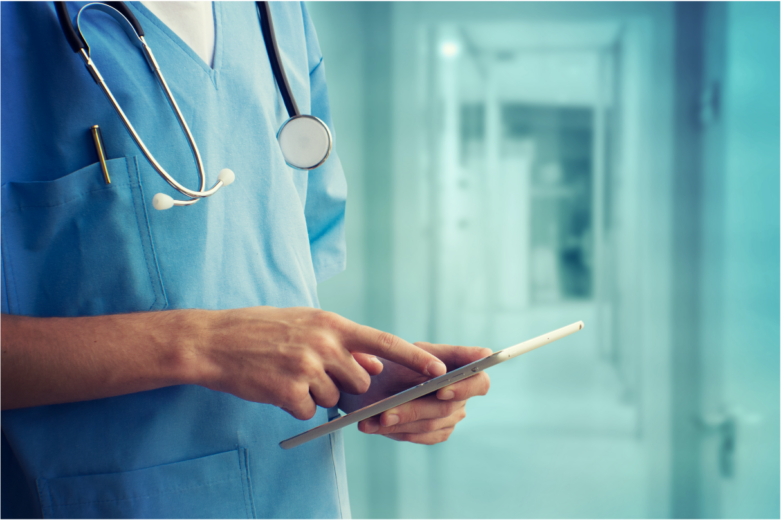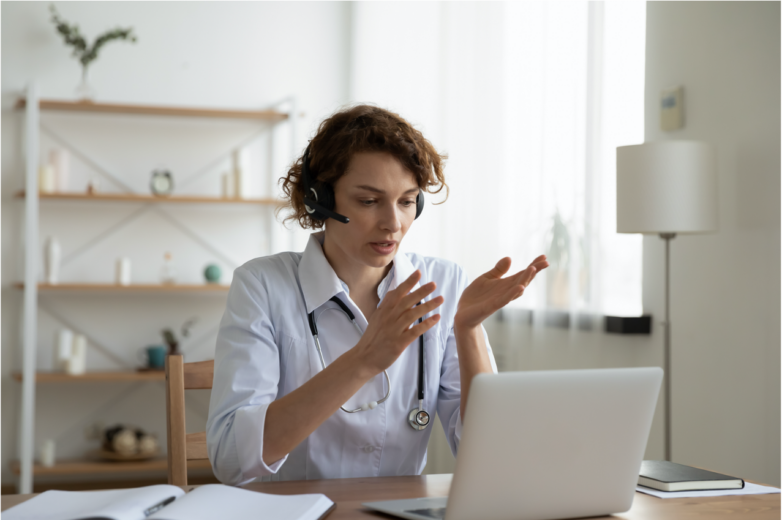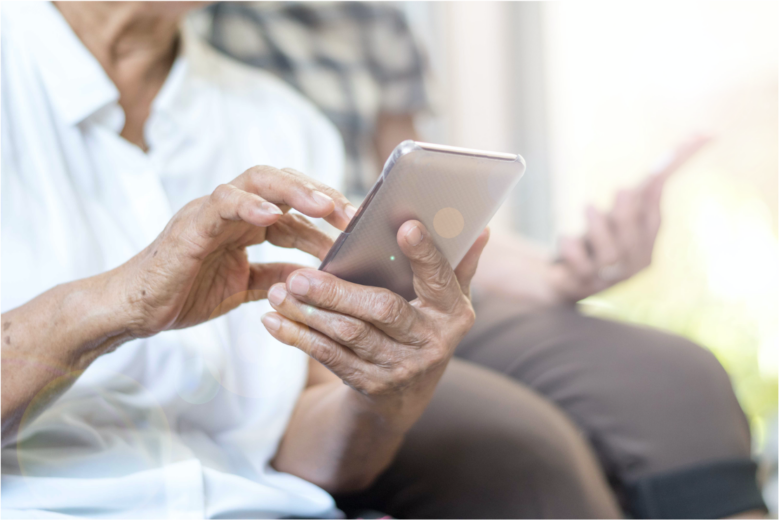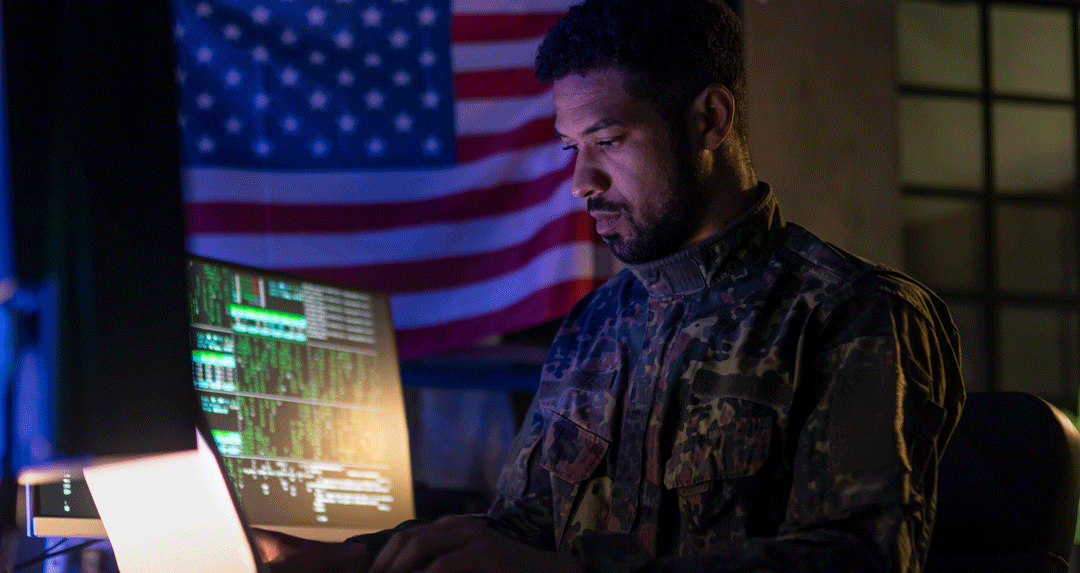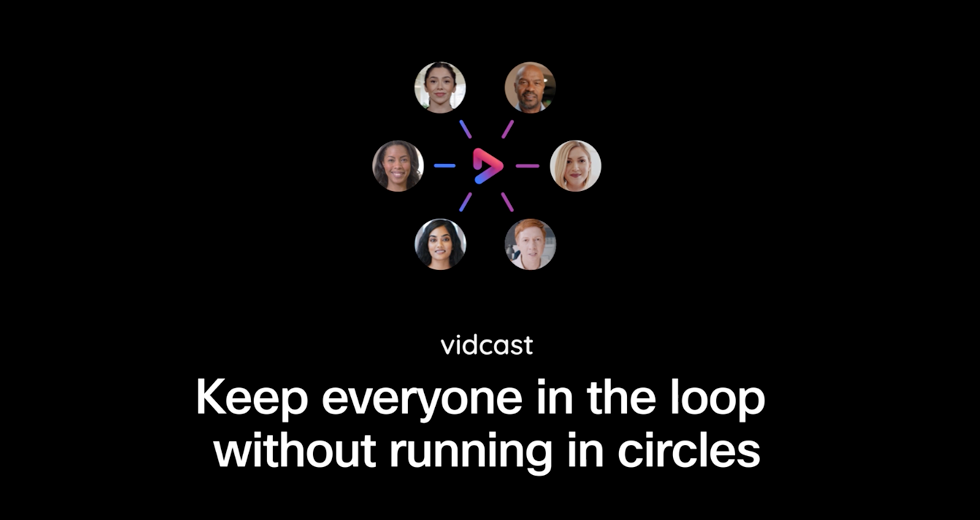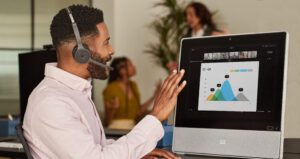Screen sharing in healthcare
Healthcare and wellness have always been among the most promising use cases for screen sharing, video conferencing, and real-time collaboration technologies. As long ago as 1996, in the influential David Foster Wallace novel “Infinite Jest,” the near future was imagined as a time when half of the population worked from home, relying on a combination of high-speed internet and “screens so high-def you might as well be there” to partake in many daily activities, including exercise and interactions with healthcare professionals.
In the real world, modern telehealth isn’t so different from that fictional portrayal. It connects patients and providers regardless of their respective locations via high-quality video and audio links. Moreover, demand for telehealth has increased dramatically since 2010 as hospitals and doctor’s offices have sought to expand their reach and make life easier for patients. The American Hospital Association found that the share of its members offering telehealth services more than doubled between 2010 and 2017, from 35% to 76%.
What does telehealth look like in practice? The U.S. Centers for Disease Control and Prevention has described three main modalities of telehealth: synchronous (e.g., real-time collaboration), asynchronous (for instance, using a store-and-forward portal to upload images for later evaluation), and remote patient monitoring (RPM) via specialized sensors and other equipment. In this post, we’ll look primarily at synchronous telehealth, particularly the use of screen sharing to augment an audio or video consultation.
The versatility of screen sharing in healthcare
In general, screen sharing is the go-to mode of collaboration for use cases such as:
- Walking a meeting’s attendees through a slide deck or other document point by point.
- Demonstrating an in-depth workflow, such as how to use a certain application or operating system feature.
- Coediting a document in real time, with audio, video, and textual feedback integrated into one convenient interface.
For healthcare in particular, the use of screen sharing is somewhat similar — it’s still a way to provide real-time explanations, supported by documents — but it’s also different in important ways.
For example, the classic slide presentation so prevalent in other contexts is useful here, but it often takes a back seat to other formats. Health-oriented screen sharing is frequently focused on the exchange of other types of documents and information, such as test results, medical charts, images, and treatment protocols. Rather than having to go into a physical office to access and talk about these assets, all interactions can be done via screen sharing software, in high detail and in real time.
This setup supports more efficient patient-provider interactions, as well as enhanced collaboration between healthcare professionals themselves, who may use a screen share platform to exchange observations and notes. The numerous features available in modern screen sharing solutions — including HD video, enterprise-grade security, and meeting recording — make these applications suitable for:
- Virtual consultations.
- Training and education sessions.
- RPM and other remote treatments.
- Annotations.
Let’s examine each of these forms of collaboration in more detail to see how they work in practice.
Virtual consultations
Connecting with a provider via screen share has been a breakthrough for patients who are located very far from the nearest provider or are otherwise limited in their access, for instance because of an epidemic that makes in-person trips inadvisable. A screen share can add important context to these meetings. A physician might use the screen sharing functionality of the meeting software to show a patient a list of steps to take for their condition, like medication options.
A similar workflow can also improve internal collaboration for providers such as hospital systems. More specifically, assets like X-rays and biopsy results may be screen shared via special internet-connected medical equipment, so that teams can make informed decisions without having to coordinate their schedules for in-person meetings.
Training and education sessions
Screen sharing has always been a prime format for delivering how-tos and instructional guidance, and healthcare is no exception. By setting up a screen share, groups of nearly any size — from a small team to an entire facility’s staff — can connect in real time to see and listen to a presentation.
This setup saves everyone a trip to a physical location. The ability to record screen-share sessions and distribute them later via email or chat also makes screen sharing a great vehicle for continuing medical education and certification.
RPM and other remote treatments
The RPM market is growing rapidly. Worth $15.8 billion in 2017, it is projected to almost double in value by 2023, to $31.3 billion, according to one assessment from Research and Markets. Typically, RPM happens in the background of a patient’s daily life. Devices such as continuous glucose monitors and physical activity trackers collect and transmit information. In turn, this data offers important insights into the current states of a patient’s conditions and which, if any, treatments make sense.
A screen share can be a useful addition to an RPM regimen. A patient might show their mobile device’s screen to a provider so that they can see the complete results from a relevant app. Screen sharing platforms usually offer flexible sharing options, letting participants show their entire screens, a chosen app, or a selected window or tab.
A full screen share may be the best option in some cases, but it comes with a few risks, including information leakage and possible disruptions from notifications. Since compliance must always be top of mind in healthcare contexts, every screen share should be carefully managed.
Annotations
Coediting is a top use case for screen sharing overall. For healthcare workers specifically, the real-time characteristics of screen share software make it possible to synchronously annotate images and other documents instead of doing so asynchronously via other channels. This workflow can allow for better clarity and fewer miscommunications.
With screen share software like Webex, your healthcare organization can ensure high-quality connections from anywhere.
Learn more by getting started for free today.
Learn more
Screen sharing how-to guide: Tips for better real-time collaboration
Personalize your team meetings with these top four screen sharing features
Why screen sharing works better for sales than traditional conference calls
Still need help?
Learn more about Webex, join one of our upcoming training sessions
Explore daily product demonstrations
Best Practices: How to Work Remotely [Live Class]
Visit our home page or contact us directly for assistance.
